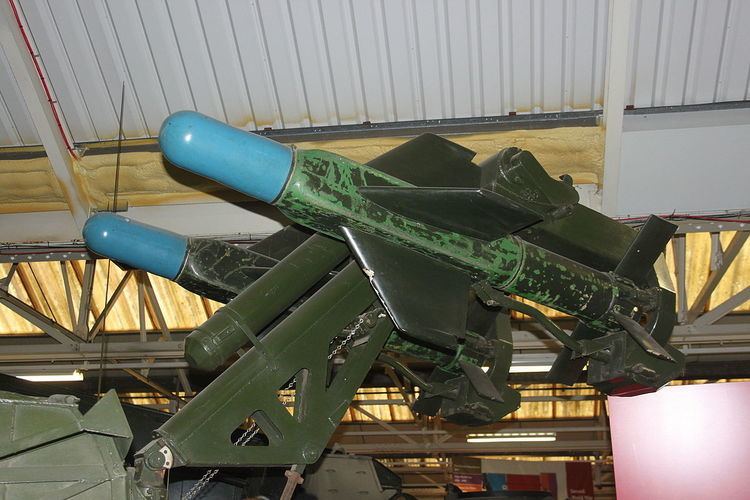In service 1958 to 1960s Designed 1954 | ||
 | ||
Place of origin United Kingdom,Australia Designer Royal Aircraft Establishment/Aeronautical Research Laboratory | ||
The Malkara (from an Aboriginal word for "shield") was one of the earliest guided anti-tank missiles (ATGMs). It was jointly developed by Australia and the United Kingdom between 1951 and 1954, and was in service from 1958 until gradually replaced by the Vickers Vigilant missile in the late 1960s. It was intended to be light enough to deploy with airborne forces, yet powerful enough to knock out any tank then in service.
Contents
Development and operations
Design was principally undertaken at the Australian Government Aeronautical Research Laboratory, and this phase was also one of the first examples of computer simulation in engineering design. Development testing was carried out at Woomera Prohibited Area, and approval testing at the tank training range at Lulworth Cove, Dorset. Although testing at Dorset apparently achieved an impressive 90% Pkill, in service the missiles were not considered a great success, due to three principal failures:
However, lessons learned from the Malkara project led to improvements in later programs. In addition, the basic airframe and expertise were directly used in the development of the Ikara anti-submarine missile and the Sea Cat surface-to-air missile.
Malkara was unusual amongst anti-tank missiles in that it had a High-explosive squash head (HESH), also known as High Explosive Plastic (HEP), warhead instead of the more usual shaped charge HEAT (High Explosive Anti Tank) warhead. The United Kingdom always showed interest for HESH, the main explosive-based anti-tank ammunition in British use including tanks like the Centurion. A 26/27 kg anti-tank warhead was well above the average, but Malkara had a calibre of 203 mm (8.0 in).
